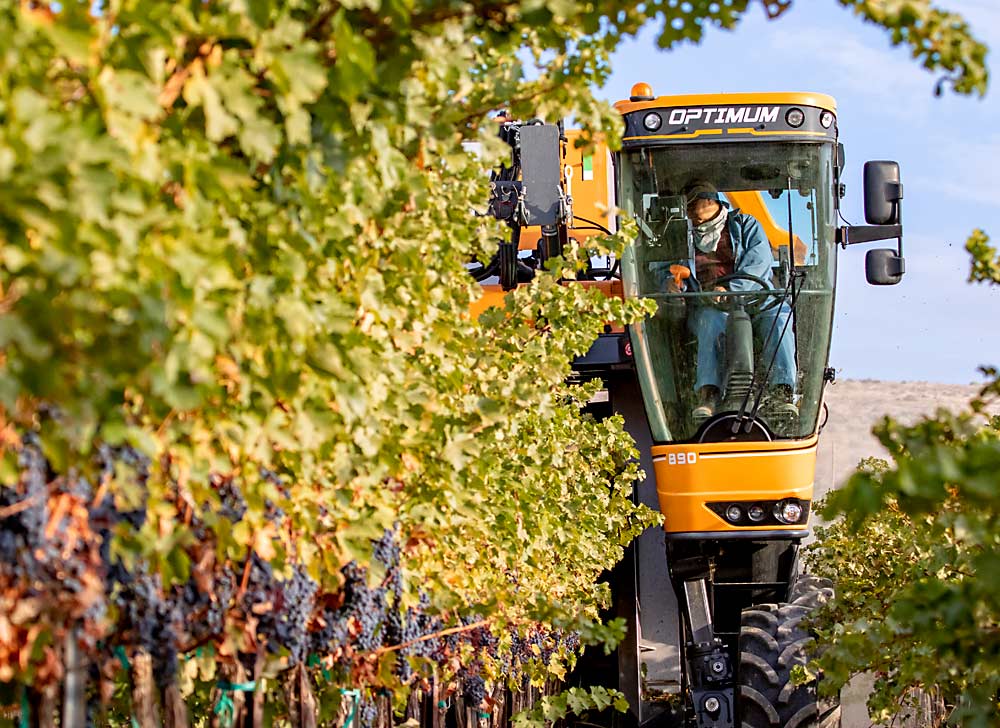
Cabernet Sauvignon grapes are mechanically harvested in October 2015 at Cold Creek Vineyard near the Columbia River’s Hanford Reach area in Washington. (TJ Mullinax/Good Fruit Grower)
Wine supply is high globally and sales are slowing, which means a transition from a period of shortage to excess — and a softening of prices, said Erica Moyer, broker and partner with Turrentine Brokerage in Novato, California. One fallout is more short-term contracts, say one or two years, for growers.

Erica Moyer
Moyer offered a tip for growers looking to make the most of their grapes: Your first loss is usually your best loss. And that goes for grapes and bulk wine.
In 2007 and 2008, wine inventories backed up in California; grapes didn’t sell, and growers custom-crushed instead of taking the loss. “They thought they would go ahead and bulk it out. When you bulk it out, you end up selling it for $1 to $2 a gallon, instead of taking the hit on a cheap price per ton,” she said.
“When you have an offer on grapes, and a period of transition that’s low, you need to take it, rather than spending the money on wine and competing on the bulk wine market,” she said. “As a grape grower, no grower wants to take a price that’s low. But if you’re offered something early, that’s usually your best offer. If you’re waiting for an offer to get better, it usually doesn’t.”
Also, selling as grapes, not wine, saves the grower the money spent making and storing that wine.
Still, she said, it’s a competitive market to sell bottles of wine, but there will be more of an evolution to sustainability.
“Vineyards that are not able to produce the tonnage will start to come out,” she said. “That’s what we saw 10 years ago (in California), with low prices. Growers had choices. They didn’t have to plant grapes. They could plant almonds. Lower prices can bring innovation and opportunity.”
In the past, the wine industry cycle from boom to bust has been eight to 10 years, Moyer said, but industry analysts have been seeing that tighten a bit to six to seven years.
“It depends on the varietal and where you are, but in general it’s probably a six- to eight-year cycle,” she said.
—by Shannon Dininny






Leave A Comment